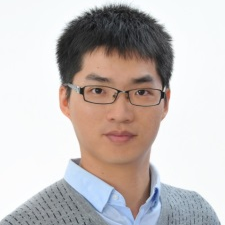Wireless Power Transfer and Its Applications
A special issue of Electronics (ISSN 2079-9292). This special issue belongs to the section "Industrial Electronics".
Deadline for manuscript submissions: closed (1 December 2021) | Viewed by 13695
-1.png)
Special Issue Editors
Interests: wireless power transfer; energy harvesting for sensors; power electronics; electric vehicles
Special Issues, Collections and Topics in MDPI journals
Interests: wireless power transfer; power electronics; transportation electrification
Special Issues, Collections and Topics in MDPI journals
Interests: sustainable energy systems & power electronics (wind turbine systems, solar photovoltaic (PV) systems, grid integration of renewable energy sources); microgrids & smart grid technologies; electric drives & electric vehicle technologies
Special Issues, Collections and Topics in MDPI journals
Special Issue Information
Dear Colleagues,
In recent years, wireless power transfer has drawn much attention due to its convenience, cleanness, and safety. This technology has been successfully applied to medical implants, mobile phones, electric vehicles, railway applications, etc. In the next decade, new technologies in stationary/dynamic and bi-directional wireless power transfer (WPT) will revolutionize the energy charging and power supply industry. To promote the excellence of research and practical applications in this topic, this Special Issue, entitled “Wireless Power Transfer and Its Applications”, will include articles that address state-of-the-art technologies and new developments for wireless power transfer, including, but not limited to, compensation circuits, coupler design, soft-switching techniques, control strategies, foreign objective detections, etc. In addition, articles which discuss the applications of WPT, from a few milliwatts to several hundred kilowatts, would be of particular interest.
We invite original manuscripts presenting recent advances in this area, including, but not limited to, the following topics:
- Wireless charging for electric vehicles, railway applications, and automatic guided vehicles;
- Wireless chargers for portable electronic devices;
- Wireless power transfer for unmanned aerial vehicles;
- Wireless power transfer for biomedical implant devices;
- Wireless power supply for the Internet of things (IoTs) and sensors;
- Dynamic wireless power transfer;
- Compensation circuit topology for stationary/dynamic wireless power transfer;
- Magnetic coupler design for stationary/dynamic wireless power transfer;
- Advanced control for wireless power transfer;
- Power control of bi-directional wireless power transfer;
- High-power-density wireless power transfer;
- Wide-range soft-switching technique for wireless power transfer;
- Ultrasonic transducer modeling and analysis;
- Foreign objective detection in wireless power transfer.
Assoc. Prof. Dr. Yong Li
Prof. Dr. Ruikun Mai
Assoc. Prof. Dr. Jiefeng Hu
Guest Editors
Manuscript Submission Information
Manuscripts should be submitted online at www.mdpi.com by registering and logging in to this website. Once you are registered, click here to go to the submission form. Manuscripts can be submitted until the deadline. All submissions that pass pre-check are peer-reviewed. Accepted papers will be published continuously in the journal (as soon as accepted) and will be listed together on the special issue website. Research articles, review articles as well as short communications are invited. For planned papers, a title and short abstract (about 100 words) can be sent to the Editorial Office for announcement on this website.
Submitted manuscripts should not have been published previously, nor be under consideration for publication elsewhere (except conference proceedings papers). All manuscripts are thoroughly refereed through a single-blind peer-review process. A guide for authors and other relevant information for submission of manuscripts is available on the Instructions for Authors page. Electronics is an international peer-reviewed open access semimonthly journal published by MDPI.
Please visit the Instructions for Authors page before submitting a manuscript. The Article Processing Charge (APC) for publication in this open access journal is 2400 CHF (Swiss Francs). Submitted papers should be well formatted and use good English. Authors may use MDPI's English editing service prior to publication or during author revisions.
Keywords
- wireless power transfer
- inductive power transfer
- contactless power transfer
- wireless charging
- magnetic resonance
- power electronics
- low-power electronic device charging
- high-power wireless charging







